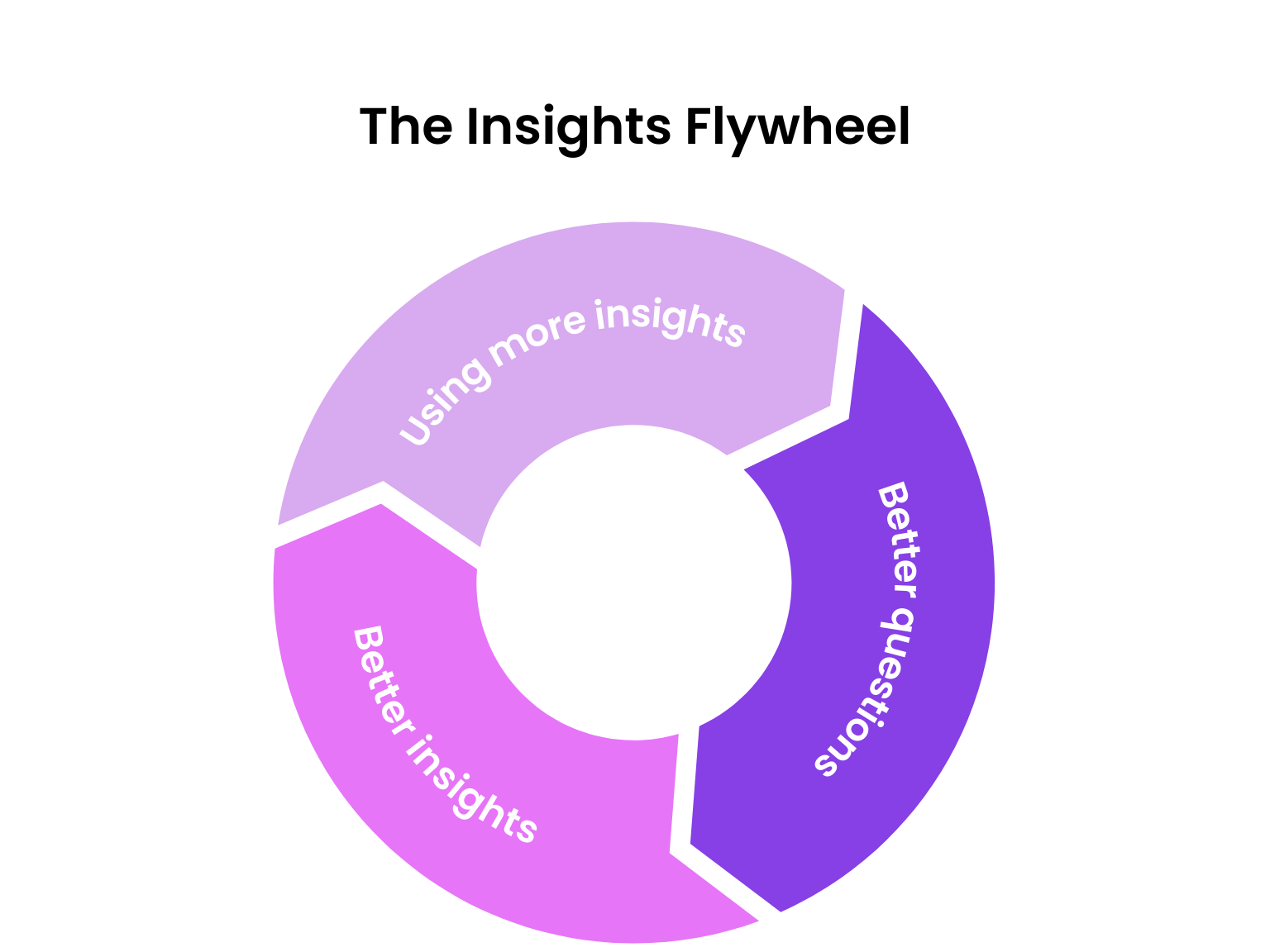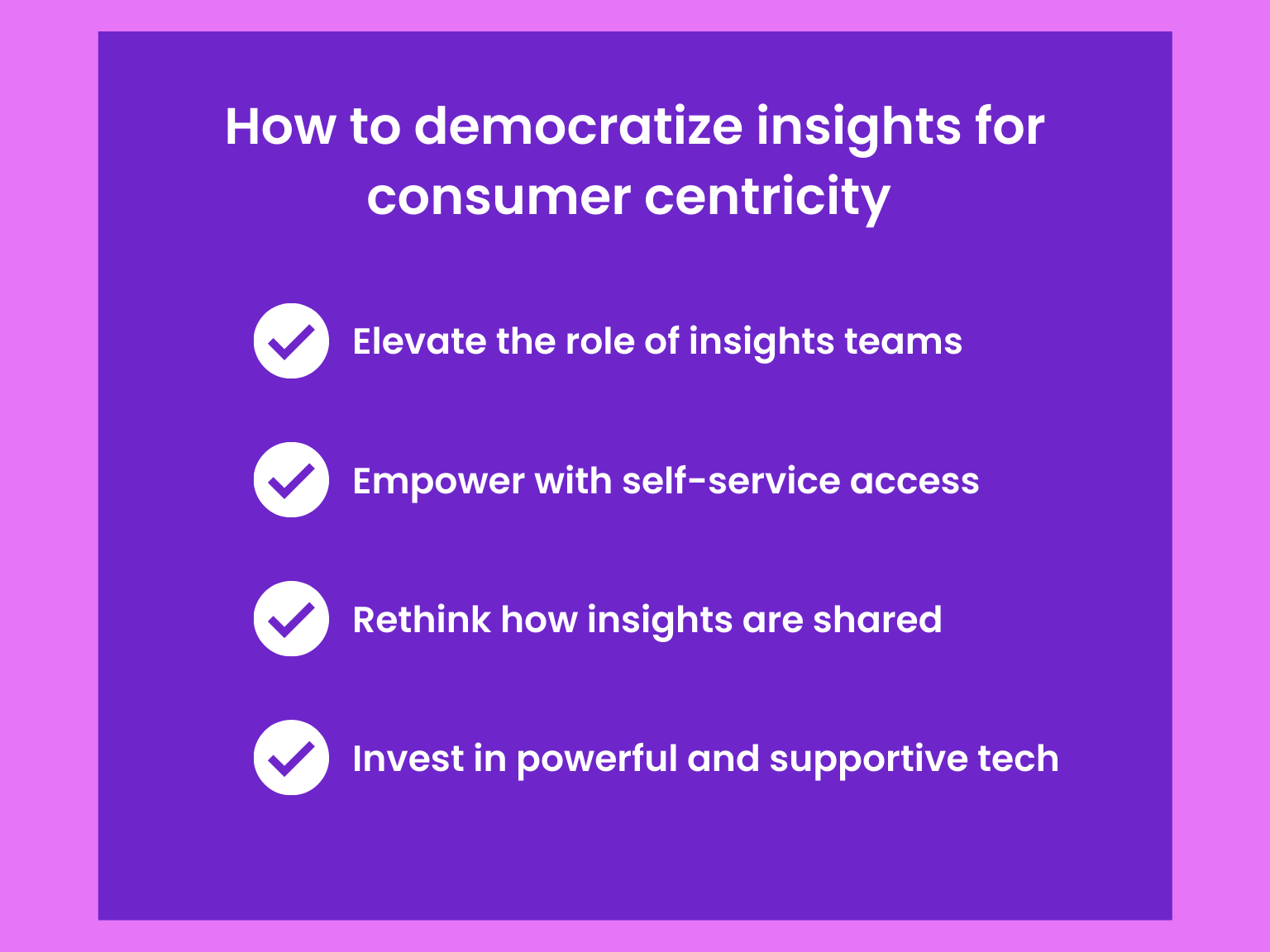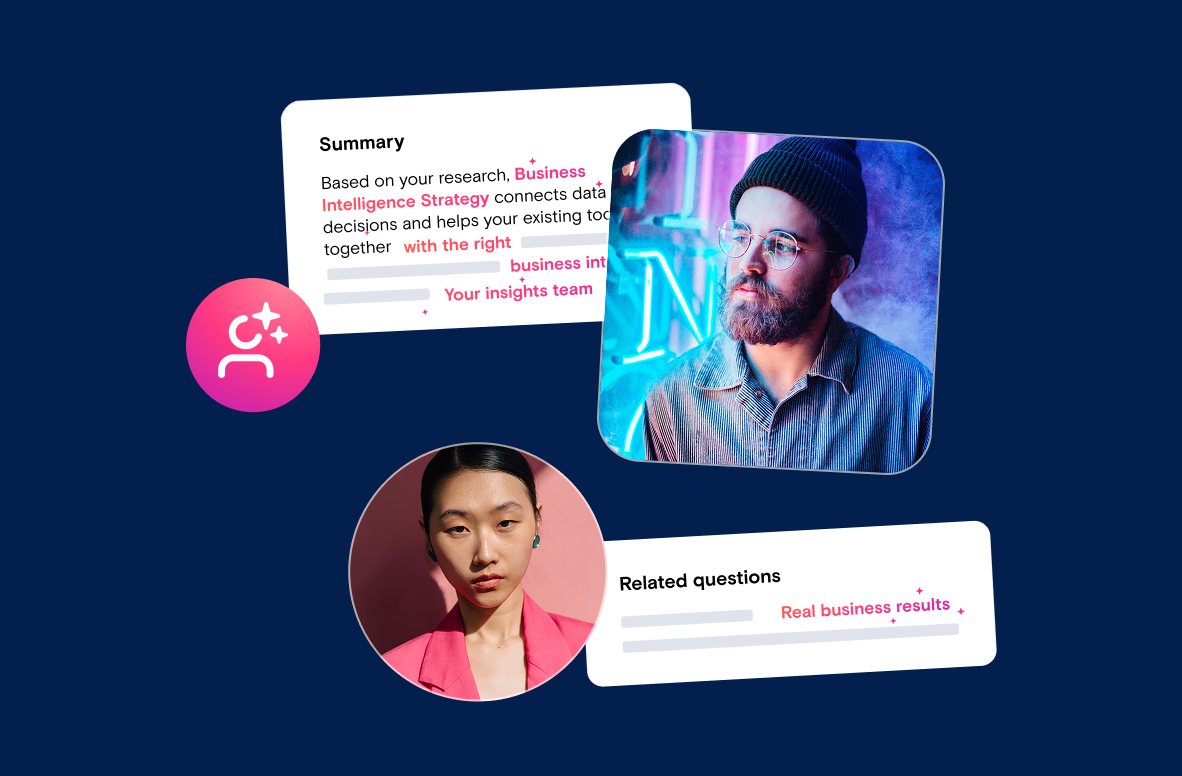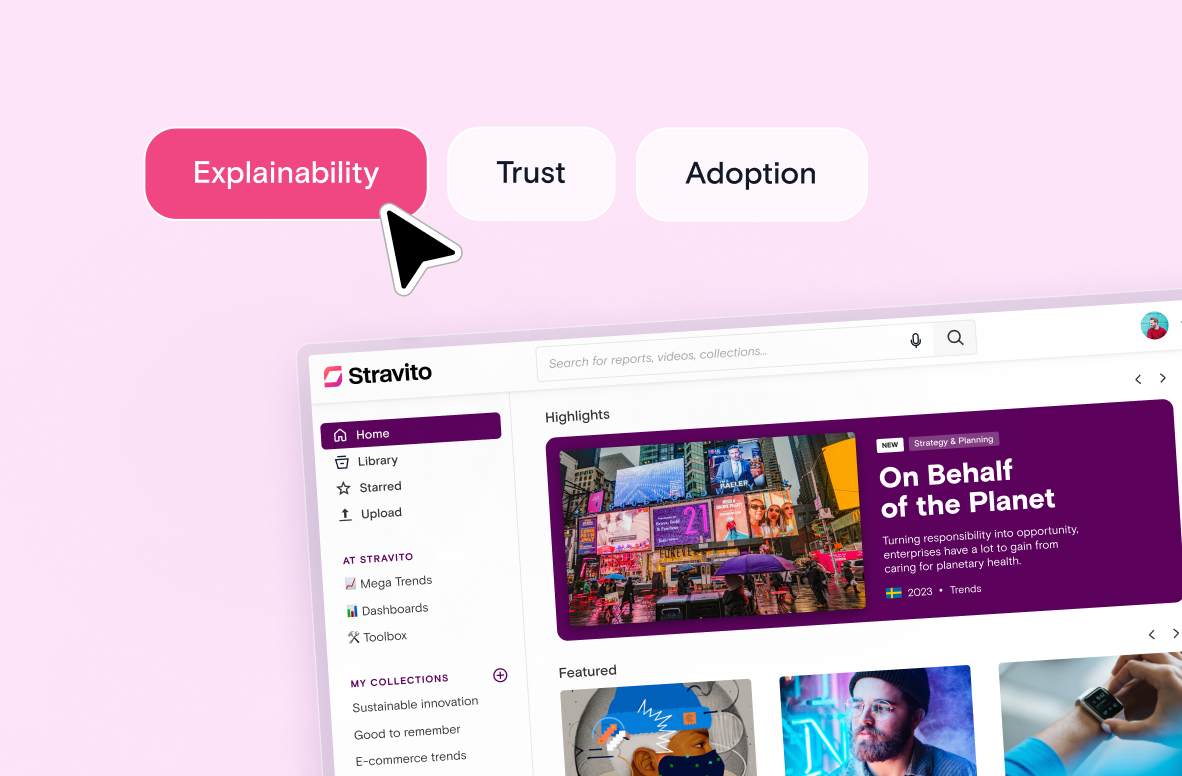In the first part of this series, we revisited what consumer centricity means and dug deep into why it’s important. And we concluded that without the right tech and processes, consumer centricity is really challenging to accomplish.
In this second installment, we’ll examine what the right technology can look like, as well as the necessary processes and culture to have in place. And most importantly, we’ll explore the relationships between them.
The chicken or the egg?
If you’re serious about enhancing consumer-centric ways of working at your company, you’re probably thinking:
Okay, so what’s the first step? Is it getting the right tech in place? Or is it shifting how we think about working with consumer insights?
The fact of the matter is it becomes very much a “Chicken or the egg?” kind of question. Because you can’t maintain the right culture without the right tech, but you’ll have a hard time choosing the right tech without the right culture. The two are tightly intertwined, and efforts with one can support the other.
So it’s not a matter of deciding which to start with; it’s just a matter of deciding to start.
Making changes to both of these elements is a long-term effort. One way to help get a clear vision of where to start is to identify where you want to end up. If you were to envision a perfect future, what does consumer-centric work look like at your organization? Start with that vision and work backwards.
In the sections that follow, we’ll break down the necessary cultural and tech elements to have in place.
Why a culture that supports insights democratization is key
Democratizing insights in your organization is an essential enabling factor for consumer centricity. It’s required to ensure that stakeholders across the organization are able to access and apply meaningful consumer insights in all that they do.
While an increasing number of companies have adopted this philosophy, there are still many who operate on an outdated model where insights teams act as gatekeepers.
In this scenario, all insights need to be accessed via the insights team. One reason for this is a fear of misuse of insights; by setting up workflows so that all requests have to come through the insights team, a form of quality control is thought to be achieved. However, approaching the distribution of insights this way creates a lot more problems than it is purported to solve.
Problem #1: Bottlenecks
Bottlenecks are the primary problem that result from a lack of insights democratization. Often, insights teams are small in comparison to the number of stakeholders that they need to serve. Because of this, requests can quickly pile up, creating long wait times before stakeholders receive a response.
While this inefficient way of working creates unnecessary stress for those involved, it also hinders insights from being incorporated into decision-making. Why? Because timing is everything.
If insights aren’t available to the right stakeholders at the right time, it’s likely that decisions will still be made. Just not decisions based on consumer insights.
Of course, this will be an occasional occurrence in even the most insights-obsessed organization. The real problem presents itself when this becomes a recurring event.
For example, think about a friend who consistently turns down your invitations to parties. Eventually, you’re likely to assume that they don’t want to come to these events, so you stop inviting them.
It’s the same with requesting insights; if enough requests take too long to get a response to, then at some point the practical reaction is for stakeholders to take matters into their own hands. Which creates the problem that was trying to be avoided in the first place.
Problem #2: Reactive vs. proactive insights work
Another resulting problem with a lack of insights democratization is getting stuck in a pattern of reactive insights work. Tending to requests takes time – time that could be spent doing more meaningful, proactive insights work.
Sharing insights with stakeholders only by request is one example of reactive insights work. But it can also look like only commissioning research in response to a pressing question at a point when a new project is already half-way done. This exclusively ad hoc approach to incorporating insights is a major barrier to consumer centricity because it creates ample space for bias.
For example, insights might only be requested to validate a decision that has already been made, rather than to investigate if there are other ways to approach the problem in the first place.
Proactive insights work, on the other hand, can be proactively communicating the latest insights to internal stakeholders in order to reduce the number of repetitive requests in the first place. It could also look like generating foresights or commissioning research for questions that are likely to be relevant in the future.
Working proactively with insights is a gift that keeps on giving, which we can illustrate with what we like to call The Insights Flywheel.

Using insights more frequently leads to better questions and decisions which leads to better insights. And the cycle repeats itself, creating increasing momentum. Pretty awesome, right?
Problem #3: A lack of trust
Beyond the issues related to working with insights themselves, preventing widespread access to insights can have repercussions for the relationships between teams. While some insights teams might fear that self-service access to insights is a recipe for cherry-picking pie, it doesn’t have to be that way at all.
Empowering stakeholders to access relevant insights whenever they need to can help foster a sense of trust between teams.
Trust is an essential element for cross-team collaboration, which is necessary for consumer-centric work. Everyone involved in a project needs to feel that they are trusted to bring their unique expertise to the table to create the best possible solution for consumers.
The alternative is a sense of resentment that builds quietly over time, reinforcing silos within the organization and sabotaging collaboration efforts.
How to democratize insights for consumer centricity
As we’ve illustrated in our discussion of the problems above, democratizing insights is a crucial element of practicing consumer centricity. But making that happen requires practical, purposeful action.
In this section, we’ll cover the actions you can take to democratize insights and strengthen consumer-centric work at your organization.

Step 1: Elevate the role of insights teams
Consumer behavior is complicated. And that’s why it's crucial for insights teams to be a strategic business partner in the organization. Their true expertise lies in carefully analyzing data through a critical and holistic lens, in order to offer nuanced and actionable interpretations to stakeholders.
But quite often, insights teams are undervalued. In fact, one study found that as many as 80% of companies limit the role of the Consumer Insights function, instead of viewing them as a strategic business partner or a source of competitive advantage. They end up functioning as librarians or an information desk for stakeholders in the organization, answering requests for information or being asked to commission research on specific topics.
This also tends to coincide with insights teams being included only sporadically throughout the stages of projects, helping to affirm decisions that have already been made, rather than being given the opportunity to apply their expertise in a deeper, more meaningful, and more proactive way.
Elevating the role of insights teams ensures that the complexity of human behavior is taken into account when interpreting consumer research, generating higher quality insights for the entire organization.
Step 2: Empower with self-service access
In order to set your organization up for consumer-centric success, it’s crucial that stakeholders are empowered with self-service access to vetted insights. If they come up with a question or their curiosity is piqued, they should be able to get a quick answer themselves, especially if it’s regarding a key topic or trend.
Sometimes, of course, a question will still require the expertise of insights managers. Whether that’s clarifying the nuances of a specific finding or commissioning new research to answer a previously unexamined question, it’s essential that insights managers themselves can also quickly access the information they need.
By reducing the volume of requests for information that have to go directly through the insights team, stakeholders will be able to apply more insights in a timely manner, and insights managers will have increased capacity to work as a strategic business partner, rather than an information desk.
Step 3: Rethink how insights are shared
Access, however, is just one part of the equation. Research reports need to be packaged and delivered in a way that makes them easy to digest. Otherwise, insights might be accessed but still go unused; having access to information doesn’t mean that we will retain it.
In fact, the German psychologist Hermann Ebbinghaus found that if new information isn’t applied, we’ll forget about 56% of it after just 1 hour.
When it comes to packaging insights, it’s particularly important that key details, like conclusions and sample demographics, can be understood with ease. Otherwise, insights could be misinterpreted or misapplied.
It’s also essential to be thoughtful about how insights are shared. Democratizing insights is, at its core, a form of organizational learning. This means that there needs to be an ongoing flow of information, instead of just relying on one-off questions from stakeholders.
But again, in order to make sure that insights are processed effectively, it’s important to consider the timing of delivery. Embracing asynchronous communication can help stakeholders and insights managers alike digest insights at a time that works best for them.
Step 4: Invest in a powerful and supportive tech toolbox
Taking the steps outlined above and maintaining those efforts is no small feat. Without the right technological support, even the best-planned consumer centricity initiatives are likely to stall.
That’s why it’s crucial to have a powerful toolbox of supporting technologies. While this toolbox will look different for every company, some platforms are essentials across the board. Some popular options to consider:
- An insights automation platform like Quantilope
- A social and trend prediction platform like Black Swan
- A video ethnography platform like Watch Me Think
- A next-generation insights repository like Stravito
When selecting the tech to include in your toolbox, you want to ensure that you pick tools that are:
- Easy-to-use
- Fun-to-use
- Able to growth with your organization
- Minimal to low admin
Powerful technology like AI and machine learning can be helpful elements of these tools, but it’s crucial that this advanced technology doesn’t come at the expense of usability. Successful consumer centricity is a continuous practice, which means that high, widespread adoption of any supporting technology is key. Otherwise, new initiatives might fizzle out in just a few weeks.
That’s why choosing technology that is both powerful and user-friendly is a key element of an effective consumer centricity strategy. The ideal consumer centricity tech toolbox should support your work, rather than distract from it.
Successful Consumer Centricity is Both an Art and a Science
At the beginning of this article, we posed the question whether tech or culture was more important. And we concluded that because both are so deeply intertwined, it doesn’t matter which comes first. It’s just about getting started.
That’s because successful consumer centricity is both an art and a science. It’s about having a thoughtful approach to the softer elements, like processes and culture, but also being strategic about the technology you chose.
It’s about using both qualitative and quantitative methods, remembering what you’ve learned while being fully aware of what you don’t know. It’s about generating high quality insights that allow your organization to develop a sense of intuition about who your consumers are and what they really need.
And in order to do that, you need to have powerful tools that keep humanity at heart.


.png?width=1200&name=2021%20Blog%20CTAs%20(7).png)


